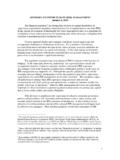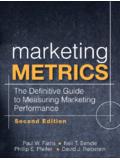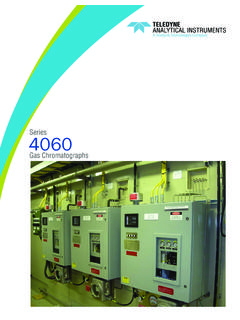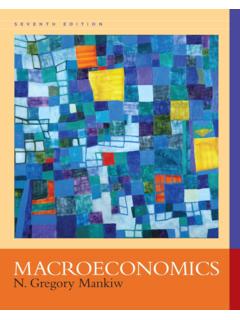Transcription of Approximate Equilibrium Asset Prices - Philippe Weil
1 Review of Finance (2011) 15: 1 28. doi: Advance Access publication: 18 June 2010. Approximate Equilibrium Asset Prices . FERNANDO RESTOY1 and Philippe WEIL2. Downloaded from at Fondation Nationale Des Sciences Politiques on December 13, 2011. 1. Comisi`on Nacional del Mercado de Valores; 2 Universit e libre de Bruxelles, Sciences Po and CEPR. Abstract. Arguing that total consumer wealth is unobservable, we invert the ( Approximate ) con- sumption function to reconstruct, in a world with Kreps-Porteus generalized isoelastic preferences, (i) the wealth that supports the agents' observed consumption as an optimal outcome and (ii) the rate of return on the consumers' wealth portfolio.
2 This allows us to (approximately) price assets solely as a function of their payoffs and of consumption in both homoskedastic or heteroskedastic environments. We compare implied Equilibrium returns on the wealth portfolio to observed stock market returns and gauge whether the stock market is a good proxy for unobserved aggregate wealth. JEL Classification: E21, G12. 1. Introduction This paper is motivated by two observations. The first one is empirical. According to Gutter (2000), non-human wealth represented less than 60% of total household wealth in the United States in 1998.
3 Moreover, financial assets amounted at the same date, at market value, to only 19% of total household wealth. The Survey of Consumer Finances shows that, in that same year, direct stock holdings represented only 21% of total financial assets. Including mutual fund shares and life insurance, this proportion only climbs to slightly more than 40% of total financial assets or 8%. of total household wealth. Even if one excludes human capital and inside financial assets (such as banks' deposits and public debt), there is therefore much more to consumer wealth than stocks and much more to the rate of return on wealth than the rate of return on the stock market.
4 The rate of return on the stock market the measure of the rate of return on wealth used by most of the capital Asset pricing literature can only be an imperfect proxy for the rate of return on wealth. The second observation pertains to theory. Many authors seem to have forgot- ten that two of the main contenders in the search for the explanation of excess returns the static (or market) capital Asset pricing model (SCAPM) and the con- sumption capital Asset pricing model (CCAPM) are not independent and unre- lated models. Regardless of the view one takes on the exact degree of rationality of.
5 We are grateful to Rosa Rodriguez for help with data and estimations. The first version of this paper was written in 1993.. C The Authors 2010. Published by Oxford University Press [on behalf of the European Finance Association]. All rights reserved. For Permissions, please email: 2 FERNANDO RESTOY AND Philippe WEIL. consumers, the length of their economic lifetime or the completeness of markets, there must be some link between Asset returns and consumption, between Prices and quantities. In the simplest case that we will explore in this paper the complete markets, representative agent framework this link has a name: the consumption function.
6 The reason for the neglect of the consumption function and the almost exclusive focus on first-order conditions is obvious: it is difficult to solve for the Downloaded from at Fondation Nationale Des Sciences Politiques on December 13, 2011. consumption function in interesting problems. But technical difficulties are no valid reason for sticking with Euler equations and for neglecting the link between the two measures of risk represented by the covariance of Asset returns with the wealth return or with consumption. In this paper, we attempt to take these two remarks seriously.
7 We develop an Equilibrium capital Asset pricing model based on Kreps-Porteus preferences as exposed in Weil (1990), Epstein and Zin (1989) and Giovannini and Weil (1989) in which the marginal rate of substitution depends both on the rate of growth of consumption and on the rate of return on wealth. But, contrary to previous authors with the glaring exception of Campbell (1993), we make explicit (albeit through log-linear approximations) the links between consumption and wealth returns to characterize Equilibrium excess returns. Although our paper conforms to Campbell's philosophy we go beyond Euler equations by using the information contained in the consumption function it takes a different perspective on the goals to be achieved.
8 Campbell's objective is to use the consumption function to eliminate consumption from his Asset pricing expressions, or, as he puts it, to compute Asset Prices without consumption data . His rationale is that aggregate per capita consumption of non-durables and services (i) is a poor measure for the consumption of market participants, and (ii) is subject to measurement and time-aggregation errors. As a result, he derives expressions for excess returns that look like a generalized version of the market CAPM. Our view, suggested at the outset, is that, from a data perspective, the difficulties involved with measuring the rate of return on wealth are as large as, if not larger than, those involved with measuring the consumption of market participants:1 the rate of return on total wealth is not simply mismeasured, it is not measured at all.
9 Reversing Campbell's method, we observe that consumer's total wealth can be reconstructed from consumption data alone under the maintained assumption that the consumption data that we observe were generated by (Kreps-Porteus) utility maximizing agents. From these reconstructed total wealth data, we can compute an implied series of rates of return on total consumer wealth which again is solely a 1. In another paper, Campbell (1996) attempts to circumvent the absence of data on the rate of return on human wealth by assuming that human wealth is constant fraction of total wealth, and that its return can be approximated by a linear function of labor income growth.
10 Since human wealth is not the only component of wealth for which no data are available, those strong assumptions can hardly solve completely the data difficulties that motivate us. Approximate Asset Prices 3. function of consumption data. These reconstructed wealth returns can then be used to calculate an ( Approximate ) pricing kernel which, because it is in turn also solely a function of consumption data, yields a generalized consumption CAPM. What we are doing can thus be thought as stripping the Asset pricing methods of Lucas (1978) or Mehra and Prescott (1985) from their general Equilibrium interpretation and from the fruit tree imagery: we take consumption as given, and Downloaded from at Fondation Nationale Des Sciences Politiques on December 13, 2011.







